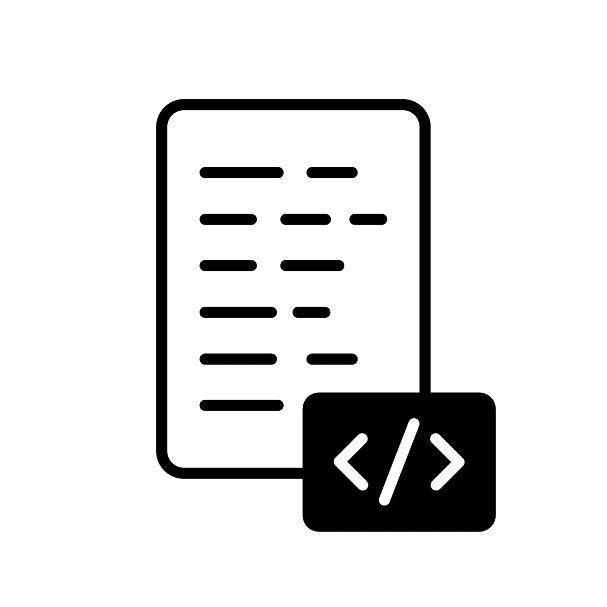Examine and present extensive datasets, employing machine learning to uncover valuable insights.

Our teachers and tutors graduated from top universities








Overview

Customised coding curriculum
Select your preferred coding languages or topics, and we'll connect you with an expert tutor who will ensure you're well-versed.

Test taking strategies
Get diagnosed about your weaknesses and strengths, and learn how to optimize your performance.

Private lesson
No need to accommodate other students. Learning is customised your perfect pace and difficulty so you are always improving.
About Python & Data Science
Python’s popularity in data science is attributed to its simplicity, readability, and extensive library ecosystem. Data science, a multidisciplinary field, leverages statistics, machine learning, data mining, and big data technologies to extract insights from structured and unstructured data.
Why Python for Data Science?
Rich Library Support: Python offers a comprehensive library stack for data manipulation and analysis, including Pandas for data manipulation, Matplotlib for data visualization, and Scikit-learn for machine learning, making it a one-stop solution for data scientists.
Community and Collaboration: Python boasts a vibrant community of data professionals and engineers who actively contribute to its ecosystem. This results in a wealth of libraries, tutorials, and collective expertise available to tackle data science challenges.
Versatility: Python’s versatility extends beyond data science to web development, automation, software development, and more, making it a valuable skill in modern workplaces.
Ease of Learning: Python’s clean and readable syntax is accessible to newcomers, especially in data science, where many professionals may lack extensive programming backgrounds.
Integration Capabilities: Python seamlessly integrates with other languages and technologies. It can call R scripts for specialized statistical analyses, interact effectively with SQL databases, and integrate with C/C++ for performance-critical tasks.
Real-world Applications: Python’s data science capabilities find applications in various sectors, including healthcare, finance, retail, and scientific research, encompassing predictive analytics, natural language processing, and more.
Machine Learning and AI: Python serves as the preferred language for machine learning and artificial intelligence, featuring specialized libraries like TensorFlow and PyTorch for advanced neural networks and algorithms.
In the Corporate Arena
Leading tech giants like Google, Facebook, and Amazon employ Python for data analytics and machine learning models. Its scalability and user-friendly nature also make it a suitable choice for startups and small businesses.
Mastering Python equips individuals with not only a programming language but also access to a diverse toolbox for deciphering the intricate world of data. This proficiency is invaluable in today’s data-centric economy.
Description
Embark on a journey into the intriguing realm of data science with this extensive Python course.
Data science entails the exploration and interpretation of data to extract valuable insights, often utilizing machine learning to automate model building and make findings more accessible.
This course not only equips you with the skills to create compelling visualizations but also delves into machine learning, empowering you to automate data processes, uncover patterns, and offer informed recommendations.
What you will learn
- Proficiency in fundamental SQL concepts
- A grasp of Python syntax, including functions, logic, lists, and loops
- Competence in data visualization and statistical analysis
- A solid grounding in machine learning principles
Requirements
- Ages 13-18
- Dedicated beginners in programming
- Interested in a future in tech
- Interested in advancing STEM skills
Student FAQs About Data Science with Python
Python stands out as the preferred language for data science due to its ease of learning and clean syntax, making it particularly accessible for individuals transitioning from non-programming backgrounds. Its robust library ecosystem, featuring tools like Pandas, NumPy, and Matplotlib, simplifies data manipulation and visualization.
Absolutely, Python’s versatility enables seamless transitions from data cleaning and analysis to machine learning, all within the same framework. Utilizing libraries like Scikit-learn, TensorFlow, and PyTorch, you can perform a wide spectrum of data-related tasks.
Python effectively manages large datasets through libraries such as Dask and PySpark, which are equipped to handle data distributed across multiple clusters.
Proficiency in Python should encompass key statistical methods, including descriptive statistics, probability distributions, hypothesis testing, and regression models. Leveraging libraries like Statsmodels and SciPy facilitates the application of these statistical techniques.
The typical journey begins with data collection, followed by data cleaning and manipulation using Pandas. Exploratory data analysis (EDA) is then conducted, often employing Matplotlib or Seaborn for visualization. Finally, machine learning algorithms are implemented using Scikit-learn to derive insights from the data.
Python exhibits versatility in handling diverse data types, encompassing numerical data, text data, image data, and even unstructured data like social media content. Its adaptability makes it a valuable tool across various data domains.
How it works
1
Request a tutor
Let us know your goals and age range. We'll figure out a plan to help get you there.
2
Match with a tutor
We'll recommend you a tutor based on your needs and goals, or you can request a specific tutor.
3
Start a free trial
Experience a free trial lesson with your new tutor and see if your learning style matches.
4
Keep it up!
If everything went well, sign up to keep going! You can choose the pacing of the lessons
Need more info?
Let's talk.
Leave your phone number, and we’ll call you back to discuss how we can help you.


